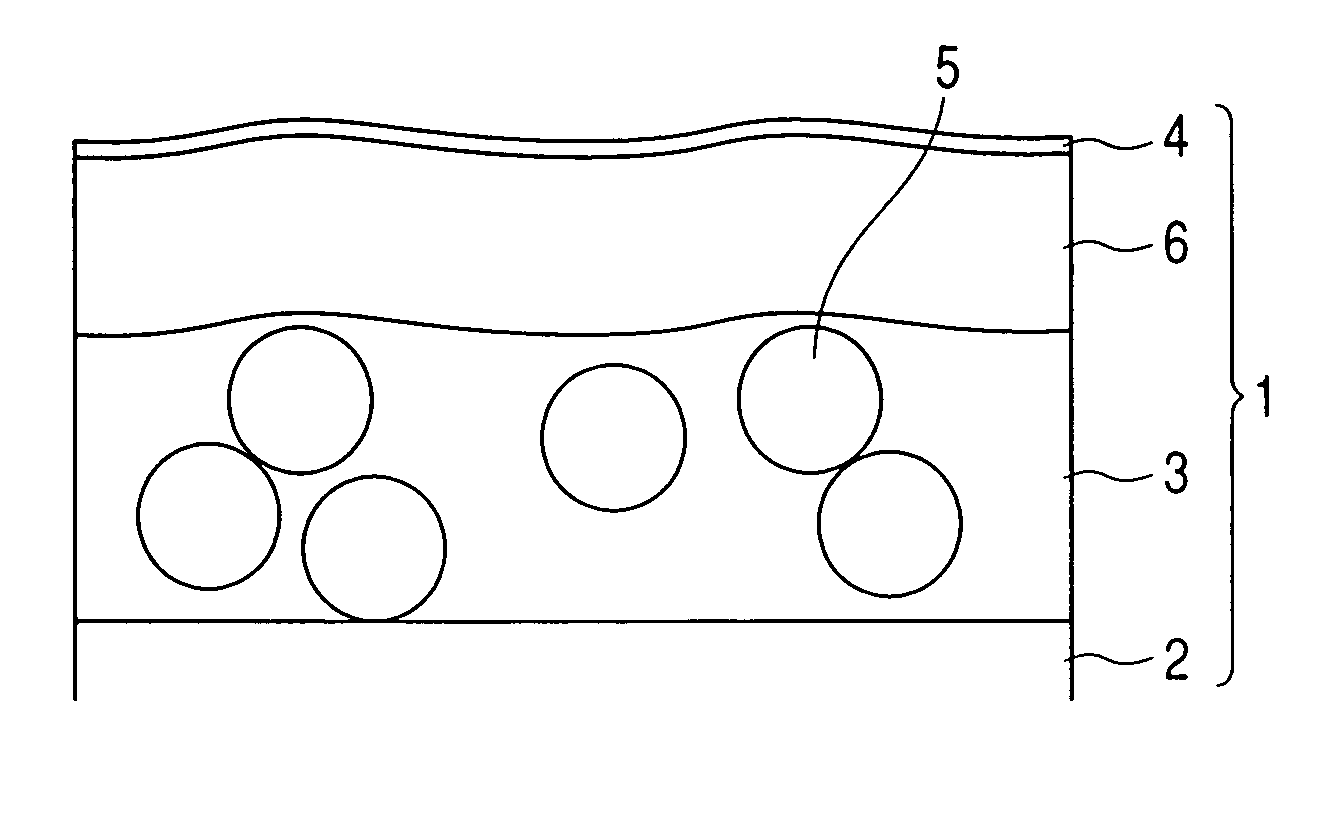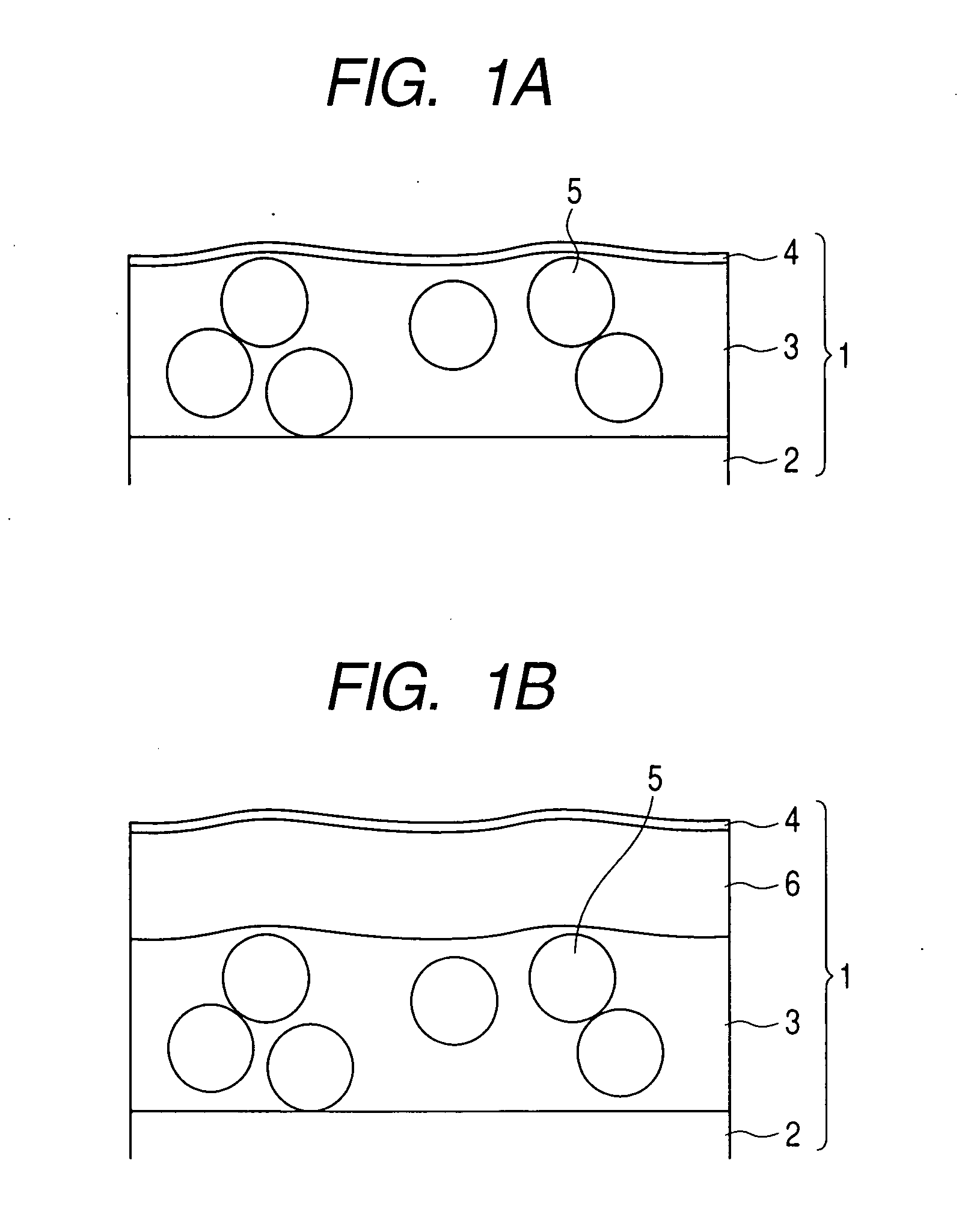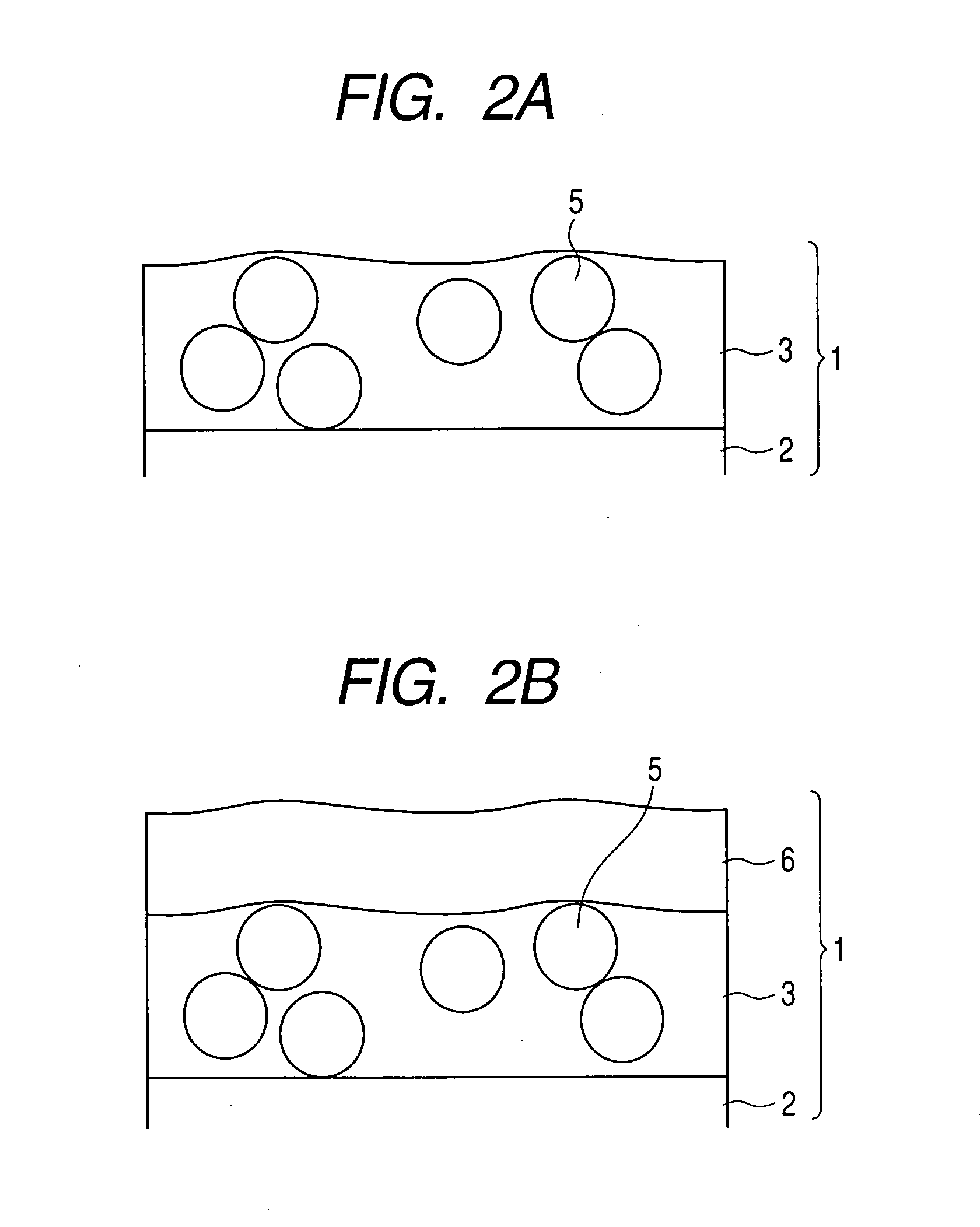Light-scattering film, polarizing plate and image display
a technology of light scattering film and polarizing plate, which is applied in the direction of optical radiation measurement, instruments, measurement devices, etc., can solve the problems of low brightness, increased cost, and reduced brightness in bright rooms, so as to reduce reflection and bright room contrast, the effect of high level
- Summary
- Abstract
- Description
- Claims
- Application Information
AI Technical Summary
Benefits of technology
Problems solved by technology
Method used
Image
Examples
example 1
(1) Coating of Light-Scattering Layer
[0451] A 80 μm-thick triacetyl cellulose film (TAC-TD80U, produced by Fuji Photo Film Co., Ltd., refractive index: 1.49) in a roll form was unrolled as the transparent support, and Coating Solution A for Light-Scattering Layer was coated thereon by the die coating method shown in Constitution of Apparatus and Coating Conditions below and after drying at 30° C. for 15 seconds and at 90° C. for 20 seconds, irradiated with an ultraviolet ray at an irradiation dose of 90 mJ / cm2 by using an air-cooled metal halide lamp (manufactured by Eye Graphics Co., Ltd.) of 160 W / cm under nitrogen purging (for adjusting the oxygen concentration to 0.05 volume %), whereby the coated layer was cured and a 12 μm-thick light-scattering layer having antiglare property was formed. The resulting film was taken up.
Basic Conditions:
[0452] A slot die 13 where the upstream lip land length IUP is 0.5 mm, the downstream lip land length ILO is 50 μm, the length of the ope...
example 2
(Production of Polarizing Plate)
[0494] A 80 μm-thick triacetyl cellulose film (TAC-TD80U, produced by Fuji Photo Film Co., Ltd., hereinafter referred to as “TAC film”) which had been dipped in an aqueous 1.5 mol / liter NaOH solution at 55° C. for 2 minutes, neutralized and then washed with water, and the light-scattering film (Samples 1-1 to 1-24 and 1-26 to 1-33, already saponified) produced in Example 1 were bonded for protection to both surfaces of a polarizer produced by adsorbing iodine to polyvinyl alcohol and stretching the film, where by a polarizing plate was produced. Incidentally, the transparent support surface of the light-scattering film produced in Example 1 was bonded to the polarizer. These polarizing plates were designated as Samples 2-1 to 2-24 and 2-26 to 2-33, respectively.
[0495] Also, a polarizing plate was produced by using the saponified triacetyl cellulose film described above for the protective films on both surfaces and designated as Sample 2-25.
example 3
(Evaluation of Polarizing Plate)
[0496] A part of the polarizing plate on the viewing side of a 32-inch liquid crystal television, TH32LX500, manufactured by Panasonic (IPS system, dark-room contrast ratio: 750) was removed and the polarizing plate produced in Example 2 (Samples 2-1 to 2-33) was instead stacked thereto. These were designated as Samples 3-1 to 3-33, respectively. The obtained displays were evaluated on the following items. The results are shown in Tables 7 and 8.
(1) Reflection
[0497] The obtained liquid crystal television was placed in a bright room and a human face was reflected on the surface of the light-scattering film of the present invention from the 5-m distant position and the level of reflection was evaluated according to the following criteria:
[0498] A: The outline is not recognized at all.
[0499] B: The outline is scarcely recognized.
[0500] C: The outline is recognized but not annoying.
[0501] D: The outline is annoying.
(2) Bright-Room Contrast (Con...
PUM
 Login to View More
Login to View More Abstract
Description
Claims
Application Information
 Login to View More
Login to View More - R&D
- Intellectual Property
- Life Sciences
- Materials
- Tech Scout
- Unparalleled Data Quality
- Higher Quality Content
- 60% Fewer Hallucinations
Browse by: Latest US Patents, China's latest patents, Technical Efficacy Thesaurus, Application Domain, Technology Topic, Popular Technical Reports.
© 2025 PatSnap. All rights reserved.Legal|Privacy policy|Modern Slavery Act Transparency Statement|Sitemap|About US| Contact US: help@patsnap.com



